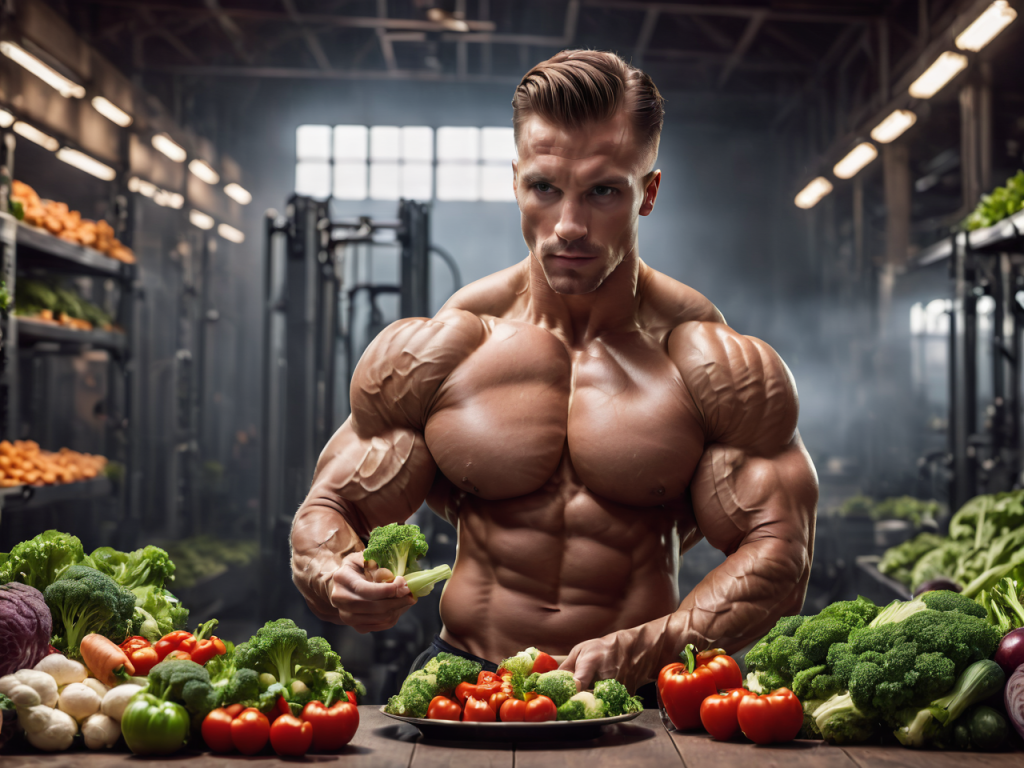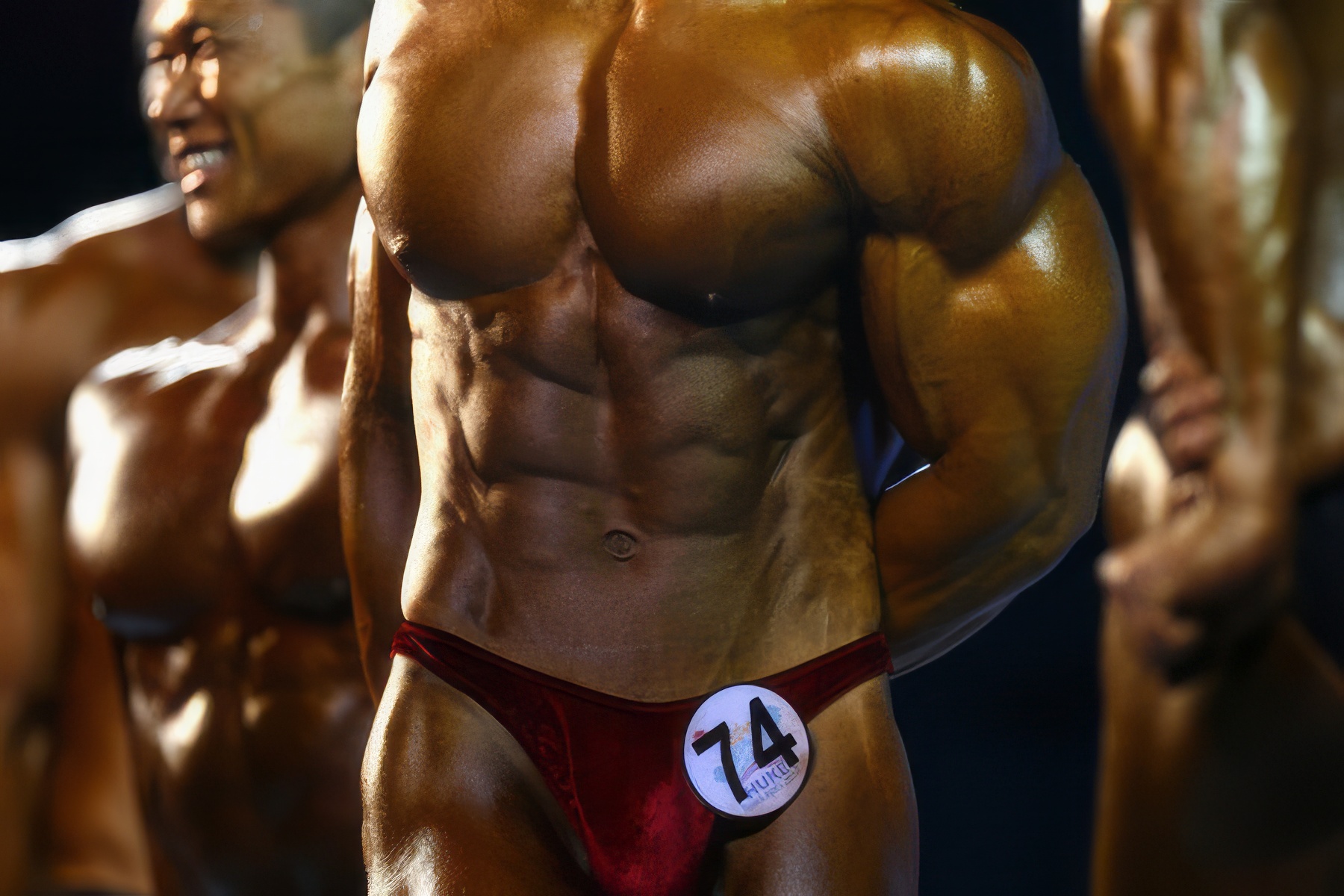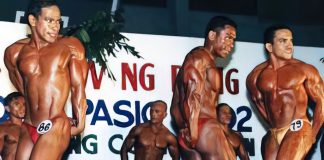Last Updated on December 22, 2023
Eating a healthy bodybuilding diet without spending hours in the kitchen.
Most bodybuilders understand what, when and how they’re supposed to eat, but what if you still can’t seem to pull your whole diet together? If you’re like me, the problem comes down to two major obstacles: a lack of time and the inability to cook.
Fear not–good nutrition can come without hours of kitchen preparation and tediously planned out Tupperware meals. You can use a microwave, fast-food restaurants and meal-replacement products to help formulate a nutritionally sound and healthy bodybuilding diet. Eating clean doesn’t automatically mean bland, boring and inconvenient.
The sample meals listed here have been designed for a 200-pound male and 130-pound female, and the overall combination uses the same basic formula: 30%-40% of calories from protein, 45%-55% from carbohydrate and 15%-20% from fat. Simple sugars are kept to a minimum with the exception of the all-important post-workout meal. Read on–you’ll soon find that talent in the kitchen isn’t a prerequisite to following a true bodybuilding diet.
Morning Meal
Oatmeal mixed with chocolate or vanilla protein powder always makes for a good breakfast for bodybuilding diet. The combination is low-glycemic with a good balance of protein, carbohydrate and fat. A 200-pound male should use 1 cup of slow-cooking dry oatmeal mixed with 1 3/4 cups water. Use a large bowl so it won’t boil over. Microwave for two minutes and 40 seconds, then mix in one serving of chocolate or vanilla protein powder. Add a packet of NutraSweet or 1 tablespoon of low-sugar jam to add taste.
A 130-pound female should use a half-cup of slow-cooking oatmeal mixed with 1 cup of water. Cook for 2 1/2 minutes, then mix in one serving of protein powder. Again, add a little NutraSweet or low-sugar jam to taste.
If you don’t like oatmeal or want something even quicker, try a low-sugar, high-fiber cereal, such as one serving of Grape Nuts (half a serving for a female) mixed with one serving of Fiber One. Add a premixed protein shake as your milk substitute and you’re ready to go. This tasty combination has virtually the same macronutrient profile as the oatmeal/protein-powder breakfast and has a relatively low glycemic rating because of the protein and fiber content.
The glycemic index refers to the rate at which carbohydrates, or sugars, are digested and absorbed into the blood. The more quickly a food is absorbed, the higher its glycemic rating. On a scale of 1-100, a highly saturated glucose solution is considered the benchmark for a high-glycemic rating with a score of 100. Foods that rank high on this scale rapidly increase blood-sugar levels, resulting in a large output of the body’s energy transport hormone called insulin. Conversely, foods with a low glycemic rating provide slower, longer-lasting energy.
200-pound male
440 Calories;
35g Protein; 59g Carbs; 7g Fat
130-pound female
290 Calories;
30g Protein; 32g Carbs; 4.5g Fat
Morning Snack
Get your next meal in about 2 1/2 to 3 hours after breakfast, generally in the form of a meal-replacement shake or bar. If you choose a shake, select one that has a 1:1 protein-to-carbohydrate ratio or is slightly lower in carbs than protein. Or, you may find the new high-protein/low-carbohydrate bars to be a little more tasty and satisfying. One whole-food meal option could be two servings of nonfat or 1%-fat cottage cheese and an apple. Of course, the apple could be substituted with peaches, plums, tomatoes, or virtually any green or yellow fibrous vegetable.
You want to keep a steady flow of amino acids going to the muscles at this point. While most glycogen replacement is completed in the 2-3 hours after training, protein needs to be steadily funneled in throughout the day.
Meal-replacement shake
260 Calories;
37g Protein; 24g Carbs; 2g Fat Bar 330 Calories; 30g Protein; 15g Carbs; 6g Fat
2 servings cottage cheese with fruit or vegetables
254 Calories;
29g Protein; 29g Carbs; 2.5g Fat
Midday Meal
About 2 1/2 hours later, it’s time for some real food. The content of this meal depends on your personal preference and your location at the time, but a sandwich is my ideal choice.
Bread is almost always frowned upon when it comes to bodybuilding nutrition. Many bread products are processed carbohydrates with a very high glycemic rating, but there are exceptions. Rye , pumpernickel and pita bread all have moderate- to low-glycemic ratings. Factor in the protein source used in your sandwich (tuna, turkey, chicken) that will lower the glycemic rating, and you have a healthy, relatively low-glycemic meal.
Tuna mixed with nonfat or low-fat mayonnaise on a small pita bread is a fantastic meal, whether you’re on the go or at the table. Adding salsa and/or hot peppers gives this sandwich a little zing.
If you don’t have time to make a sandwich, a fast-food alternative is as simple as picking up a grilled-chicken sandwich or two. A 200-pound male should get a sandwich with the amount of chicken breast of two sandwiches. A 130-pound female should eat just one sandwich. Of course, order the sandwiches without mayonnaise, cheese or oil-based dressing, but you can add a small amount of barbecue sauce or ketchup for more taste.
200-pound male
6 oz. tuna on pita bread: 374.5 Calories; 45.5g Protein; 38g Carbs; 4.5g Fat
130-pound female 3 oz. tuna on 1/2 pita bread 186 Calories; 22g Protein; 20g Carbs; 2g Fat
Midafternoon Snack
Some 2 1/2-3 hours later is the last meal you’ll eat before your training session. Not only does it need to be convenient, but your body should have little difficulty digesting it. If you guessed this would be the ideal time for a meal-replacement shake, you’re right. If the thought of a shake doesn’t excite you, a nonfat, no-sugar-added yogurt mixed with one serving of protein powder will do just fine.
Meal-replacement shake
260 Calories; 37g Protein; 24g Carbs; 2g Fat 8 oz.
nonfat yogurt mixed with protein powder
238 Calories; 34g Protein; 21g Carbs; 2g Fat
Post-Workout Meal No. 1
Right after you finish your training session, it’s time for the two meals that will most influence your bodybuilding progress. The 2-3 hours following your workout are most commonly referred to as the post-workout window of opportunity. This is a period when your muscles are very receptive to storing glycogen (carbohydrates) and absorbing amino acids (proteins). If you use this 2-3-hour period wisely, you’ll not only have more energy for your next workout but you’ll also fulfill one of the most critical elements involved in adding lean mass–proper post-exercise nutrition for your bodybuilding goals.
A 200-pound male should try to consume 80-100 grams of high-glycemic carbs and 25-40 grams of protein in his first meal after his workout. A 130-pound female should consume roughly 50 grams of high-glycemic carbohydrates and 15-20 grams of protein. Premade post-workout bars and drinks fulfill these requirements nicely, if not perfectly. This is also the ideal time to take supplements like creatine monohydrate and L-glutamine simply because the absorption rate will be much greater. The correct timing is definitely post-workout.
200-pound male
1 high-protein/high-carb sports drink and one meal-replacement sports bar
535 Calories; 26g Protein; 87g Carbs; 5g Fat
130-pound female
1 meal-replacement sports bar
310 Calories; 16g Protein; 50g Carbs; 5g Fat
Post-Workout Meal No. 2*
Your second bodybuilding diet post-workout meal and final full meal of the day should be consumed 60-90 minutes later. This meal should be rated moderate- to moderately high-glycemic. Remember, you still want to take full advantage of the post-workout window of opportunity. A 200-pound male will want to consume another 80-100 grams of carbs and 30-50 grams of protein in this meal. A 130-pound female should take in just about half that–40-50 grams of carbohydrates and 15-25 grams of protein.
At this meal you’re allowed to eat various foods that would be off-limits at other times of the day because of the glycemic level of the carbohydrates. Through the years, I’ve come up with several different no-cook combinations that are not only satisfying but really get the job done.
My favorite bodybuilding diet post-workout meal is Healthy Choice French Bread Pizza . Believe it or not, this is a moderately high-glycemic meal that has a perfect post-workout macronutrient profile. A 200-pound male can eat two pizzas and a 130-pound female should eat one. Of course, preparation does require using a microwave oven or conventional stove.
If you want to avoid the stove or microwave altogether, a bagel-based sandwich is an excellent choice. A 200-pound male should add 6 ounces of cooked unprocessed deli-style turkey or chicken breast, while a 130-pound female should add 3-4 ounces of the same type of turkey or chicken breast, to his or her favorite bagel. Add mustard, nonfat or low-fat mayonnaise, or any low-fat topping and enjoy. For a few more carbs, a 200-pound male can add two servings of Baked Tostitos or Baked Lays chips to his meal.
Another option is as simple as picking up a turkey breast or chicken breast submarine sandwich . (Make sure the meat is real, not processed.) A 200-pound male will want a large sandwich with extra turkey or chicken. A 130-pound female will do just fine with a medium or small sandwich with the smaller amount of turkey or chicken breast (4 ounces).
Use the macronutrient profiles provided and reference a book on food counts and values to come up with plenty of other options. Remember, this is the one meal that allows for a little flexibility.
* Add 1 tablespoon of essential oils each day to satisfy the body’s need for essential fatty acids. The oil can be added to a meal or taken in between meals.
Something else that bodybuilders need each day is a healthy supply of fruit and vegetables . Most recommendations suggest consuming five servings per day. I say get at least that much, and the good news is that many taste great without the need for any cooking at all–in fact, they’re better for you that way. A few excellent choices include oranges, apples, strawberries, tomatoes, cucumbers, broccoli, carrots and celery.
200-pound male
2 Healthy Choice French Bread Pizzas#
660 Calories; 44g Protein; 98g Carbs; 10g Fat Bagel sandwich and chips 650 Calories; 46g Protein; 103g Carbs; 6g Fat
130-pound female
1 Healthy Choice French Bread Pizza
330 Calories; 22g Protein; 49g Carbs; 5g Fat
Bagel sandwich
370 Calories; 33g Protein; 52g Carbs; 3.5g Fat
# This product’s sodium content may seem a bit high (480-960 mg), but the remainder of the diet presented here is relatively low-sodium. Recommendations for sodium range from 2,000-3,000 mg daily. Athletes, especially hard-training ones, need to make sure they take in enough sodium each day.
Don’t forget to add a complete multivitamin/mineral supplement to your daily meal plan. This is just to ensure that you get all the vitamins and minerals you need for recovery, growth, digestion, and overall health and well-being.
See, I’ve adhered to my promises:
1) Talent in the kitchen isn’t a prerequisite to following a bodybuilding diet, and
2) good bodybuilding nutrition doesn’t need to be bland or boring to be highly effective.








